Carnivorous Plants: Characteristics, Types, and Care
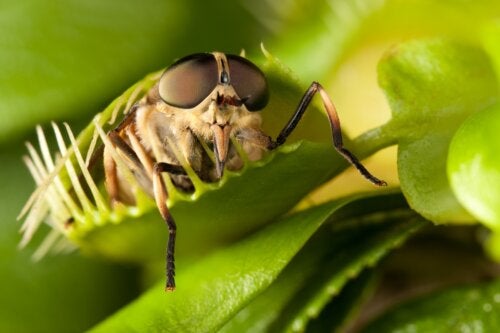
Can we have carnivorous plants at home without being in danger? Yes! The reality of this species is far from what has been presented in Hollywood movies.
We understand that carnivorous plants spark a lot of curiosity because, as their name suggests, these are plants that need other living beings to incorporate the necessary nutrients. In addition to photosynthesizing like any other plant, they feed on insects and even mice, birds, and fish in some cases – but not humans, as science fiction has shown us!
They prefer tropical areas and are found mainly in America, Asia, and Australia. They are very striking and their morphology is captivating, as many of them glow at night to attract their prey.
Although it’s possible to have carnivorous plants at home, it’s necessary to know them in depth because they require some special care.
The main characteristics of carnivorous plants
Fascinating and enigmatic, carnivorous plants differ from the rest by 3 main characteristics:
- They trap and kill their prey.
- They have an internal system to digest it.
- They assimilate the nutrients they extract from the prey.
In addition to small insects, they hunt spiders, crustaceans, and invertebrates that live in the water or on the ground. They can even hunt and eat lizards!
In this sense, their leaves fulfill a key function: they capture prey and can do so in two ways. Through a fast movement, or in a slow way, in which the prey is immobilized because it’s trapped thanks to a sticky substance.
They capture the attention of their food with their colors, nectar, and perfumes, and even by glowing in the dark.
Once the prey is attracted and captured, the digestion process begins. They use enzymes or bacteria to disintegrate the food. They do not chew it. This process can take a few days to complete.
Types and species of carnivorous plants
There are hundreds of species of carnivorous plants. According to their origin, they can be categorized as coming from tropical zones or not.
If you’re interested in planting or purchasing some of these unique plants, we recommend you opt for those of the second group. It will be much easier to take care of them.
Venus flytrap
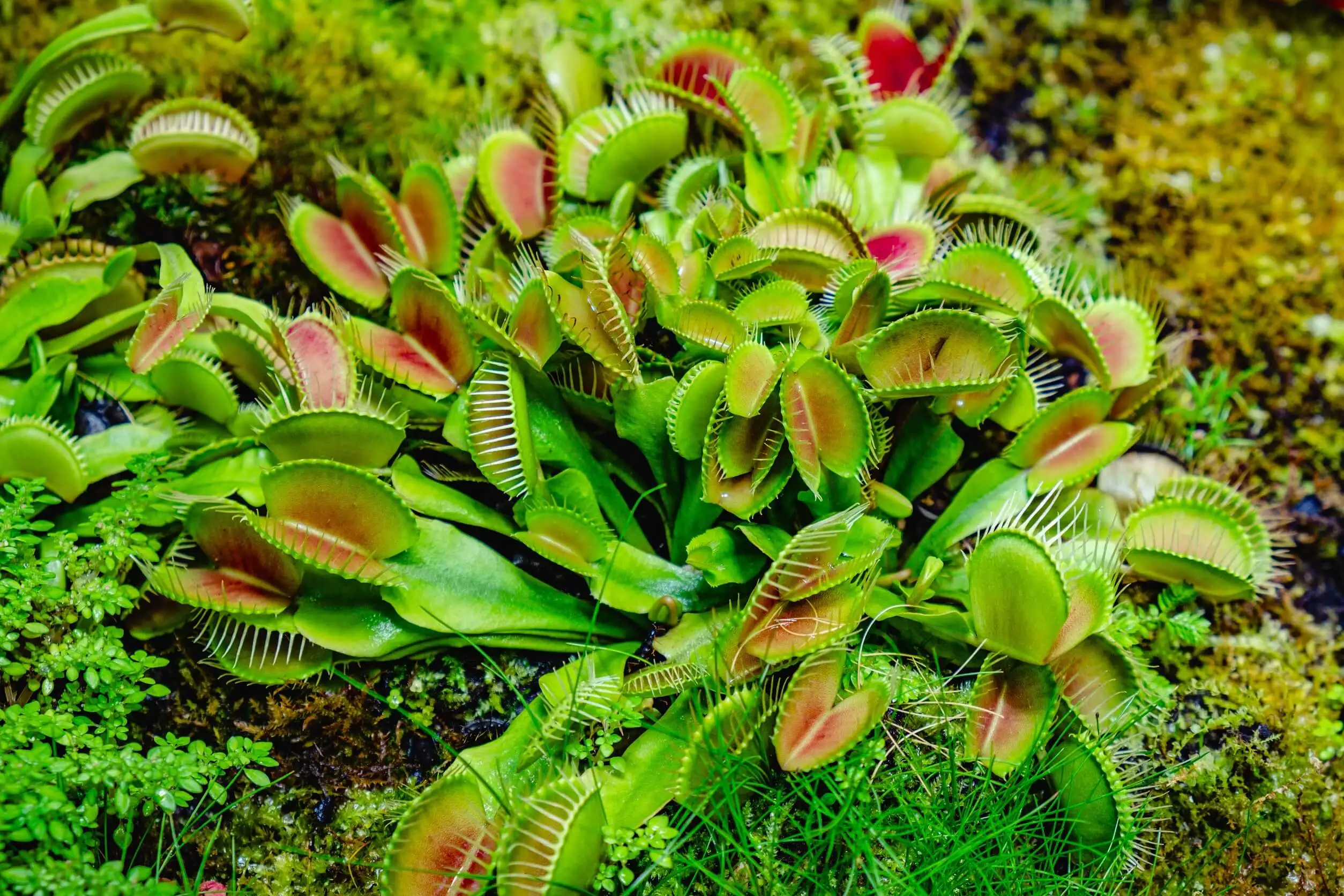
This carnivorous plant is one of the best known and prefers to hunt insects. It does so by means of a mechanical movement of the “trap” type, as botanical studies comment.
This variety has to be indoors because it does not tolerate low temperatures. It needs excellent natural light to survive. Remember to choose a large pot so that its roots are properly fixed.
We think you may also enjoy reading this article: 10 Perfect Plants to Cool Your Home in Hot Weather
Pinguicula
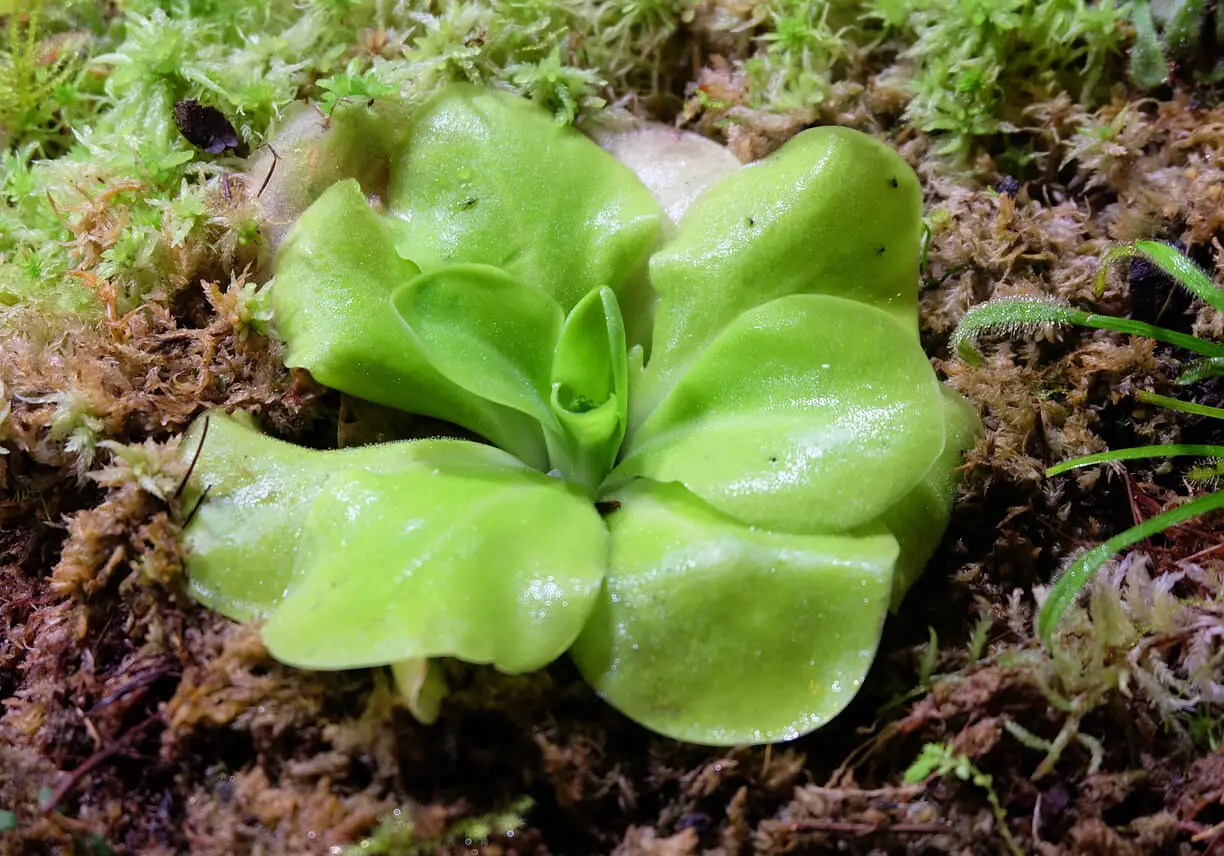
This plant is found mostly in Europe and is highly ornamental in appearance. Its leaves are green rosettes and its flowers have an intense violet hue. The good thing about these plants is that they can withstand low temperatures without any problems.
Sun dew
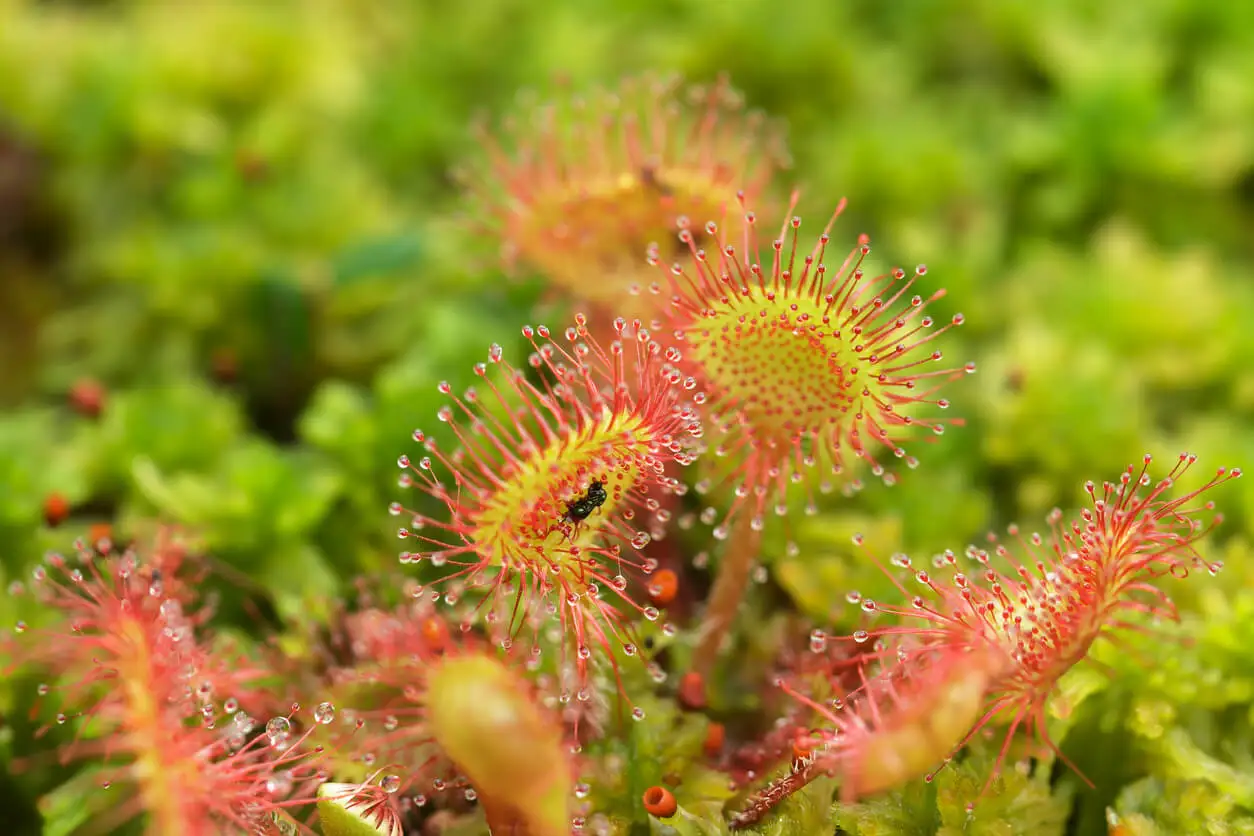
The structure of this curious plant is very peculiar thanks to its red hairs, which have a kind of tiny balloon at their tips. A sticky substance is stored here, which is what traps the prey and immobilizes it.
Its characteristics make it very striking and it’s excellent as a decorative plant. In general, it withstands temperatures between 10 ºC and 30 ºC. It likes natural light, but not drafts.
Nepenthes
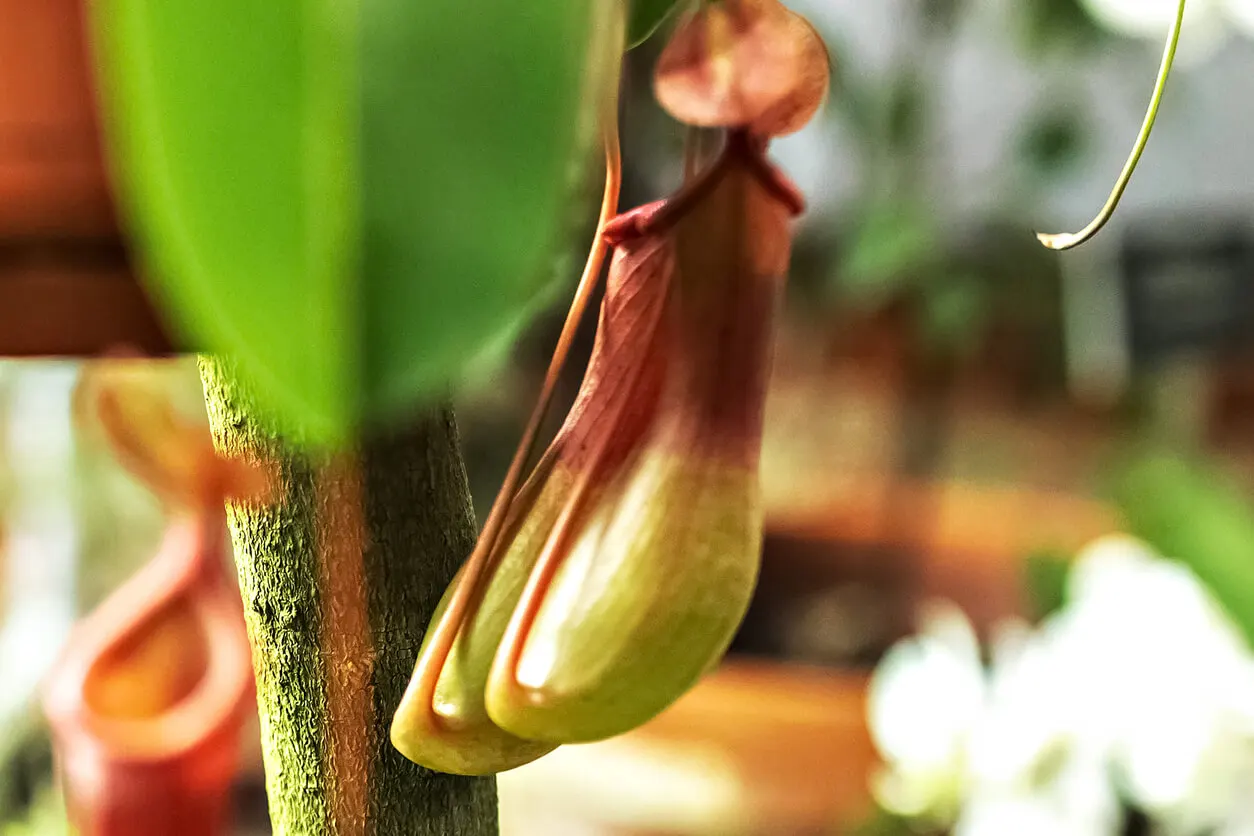
This plant is very showy and easy to grow, but does not do well with excess water. We can see some small bags hanging from it, which give it a more picturesque appearance.
Like this article? You may also like to read: 8 Dangerous Houseplants for Dogs and Cats, Take Care of Your Pets!
General care guidelines for carnivorous plants
Although they require care similar to that of any other plant, there are some special attentions that are specific to each species:
- Pot: Try to choose one that is not made of terracotta or clay, because when they get wet, they release some substances that could damage the roots. The plastic ones work very well and must have a correct drainage system.
- Substrate: It must be low in nutrients and minerals. Sphagnum is the most recommended because of its acid pH. You can use it alone, with coarse sand, or with perlites.
- Watering: The ideal is to water them by immersion, because they need a good quantity of water to keep up their humidity levels, but it doesn’t have to remain a puddle in the pot. In the summer, you can water them every other day, while in winter, you should do this only twice a month. In any case, always consult the place where you buy them and what is the best frequency for the species you are carrying.
- Feeding: You should not feed them with insects, because they should be able to provide themselves with their own food. Unless they have no way to hunt their prey in the place where you place them, you can help them with one or two insects per month.
- Acclimatization: There should be moss in the pot because it’s the closest thing to what they have in their natural marsh habitat. Carnivorous plants that don’t come from tropical areas can spend the cold months hibernating very well.
Carnivorous plants are an interesting option to have at home
One of the best ways to have carnivorous plants at home is in a circular glass container, so that the natural conditions of the original habitat are emulated. They can be very decorative and, if you provide them with the right soil and substrate from the start, you won’t have to spend a lot of time caring for them.
We hope you’ll be encouraged to grow some of the carnivorous plant species that are available in your area. Create a nice corner for them in your home and create a different kind of indoor garden.
All cited sources were thoroughly reviewed by our team to ensure their quality, reliability, currency, and validity. The bibliography of this article was considered reliable and of academic or scientific accuracy.
- Baranyai, B., & Joosten, H. (2016). Biology, ecology, use, conservation and cultivation of round-leaved sundew (Drosera rotundifolia L.): a review. Mires and Peat, 18. https://www.cabdirect.org/cabdirect/abstract/20173041898
- Blondeau, G. (2020). El gran libro de las plantas carnívoras. Parkstone International. https://books.google.com/books?hl=es&lr=&id=sd0WEAAAQBAJ&oi=fnd&pg=PT2&dq=plantas+carn%C3%ADvoras&ots=FBY-9ntVc5&sig=97_6yDCY91PoBohaZx5LLUBhZQU
- Climent Soler, Ó. (2020). Las plantas carnívoras y sus interacciones con los insectos. https://rua.ua.es/dspace/handle/10045/107689
- Volkov, A. G., Adesina, T., Markin, V. S., & Jovanov, E. (2008). Kinetics and mechanism of Dionaea muscipula trap closing. Plant physiology, 146(2), 694. https://www.ncbi.nlm.nih.gov/pmc/articles/PMC2245849/
- Zamora, R. (2002). Importancia de la heterogeneidad ambiental en la ecología de plantas carnívoras mediterráneas: implicaciones para la conservación. Revista chilena de historia natural, 75(1), 17-26. https://www.scielo.cl/scielo.php?pid=S0716-078X2002000100003&script=sci_arttext
This text is provided for informational purposes only and does not replace consultation with a professional. If in doubt, consult your specialist.








